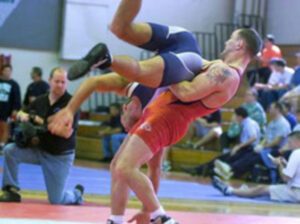A New Paradigm in Soccer/Futsal Player Development in the United States
The United States has the largest talent pool of soccer players in the world, but repeatedly underperforms in producing elite level players on the international level. There have been countless discussions on this topic, but most are missing a vital part of the player development equation — the lack of overall physical preparation for our kids before throwing them into the sport.
For example, not too long ago, school-aged kids would play outdoors for hours, games like hop scotch, jump rope and climbing on monkey bars. These games taught coordinated movement patterns of the arms and legs, planes of movement, postural alignment, core strength, muscular flexibility and joint mobility. This unfortunately is no longer the case, with many kids experiencing a sedentary lifestyle at the onset of the digital age. It’s not hard to realize that we would give our players a tremendous advantage if we taught them those movements as part of their training.
In the present soccer development paradigm in the U.S., kids are put into cone dominant soccer training year round with little time given to training the player’s foot strength and mobility, core strength, running form, jumping technique, power, rhythm, elasticity, balance, agility and quickness. Cones as the primary training tools fail the most basic test — whether or not their use is game-related. For example, drills conducted with cones require a player to search the ground for cueing and can easily be stepped on or have the ball rolled across them without any real consequence — something not found in the game itself.
Soccer requires a player to look up to observe an opponent’s body position in order to make decisions on performing the footwork necessary to out maneuver an opponent. Cones require the opposite, as the player is taught to instinctively look down at the ground, leaving them vulnerable to the pressure of an opponent.
Soccer also requires players to run around or jump over the outstretched legs of a defender while maneuvering a soccer ball. Cones allow a player to simply roll the ball across them, which does not present an obstacle similar that of an opposing player.
One solution to this challenge is to integrate ballistic (jump training) into the traditional soccer drills run at every practice. This can be done by replacing most of the cones utilized in the drills with coaching sticks/bicycle flags with hurdle attachments or rope tied around them to produce hurdles. By utilizing hurdles instead of cones, a player touching the ball is optimally challenged to overcome their neurological system’s tendency to stagnate in it’s responses. The result is superior nervous system function, and ball touch becomes the critical component, which produces dramatic improvement in speed, power, quickness, grace and and overall athleticism.
Additional utilization of mini trampolines, jump ropes and agility ladders while training with the ball enhances the player’s neuromuscular stimulation and intensification, and provides a greater development of visual and spatial awareness, balance, plyometric strength, power, myelin development and fast-twitch muscle fiber recruitment. The rebound movements in ballistic jump training activate the central nervous system to coordinate the stretch reflex action to produce a higher rate of muscular speed of contraction and the greatest amount of force in the shortest amount of time.
Ballistic jump training improves a players ability to move, which is the defining ability of any athlete.
Ballistic soccer training is utilized around the world for youth development. It’s fun and challenges player’s strength, cardio endurance and balance. Players jumping rope or over hurdles, on mini trampolines or traversing agility ladders while touching the ball quickly develop increased levels of muscle elasticity, proprioception, balance, spatial awareness and joint mobility, especially if the drills or exercises are performed barefooted or in socks.
Coaching sticks with inexpensive flat bases can be used on turf fields and indoor futsal courts where bicycle flags are not permitted. Bicycle flags and rope can be purchased at a modest price from most sporting goods and discount stores. Additionally, inexpensive mini trampolines, jump ropes and agility ladders are widely available at most sporting and discount stores.
Implementing these simple and inexpensive alternatives to cones improves vision and field awareness by cueing a player to look up, avoid, and then jump over and negotiate a hurdle, all while touching the ball. Integrating ballistic training to the drills the coach is already utilizing forces the player to look and react to an opponent as they would during a game.
It’s time to rethink the way we train players in the U.S., limiting the use of the cones as the primary training tool during technical soccer drills with the ball and replacing them with kinesthetic training tools like coaching sticks, hurdles, mini trampolines, jump ropes, and agility ladders. Cones certainly have a place in a well thought out training program for training reaction, peripheral vision and visual cueing. Using them as a main training tool just because they are cheap, convenient and easy should not take precedent over providing our athletes with scientifically proven game-related skills training.
In conclusion, making these small inexpensive changes to much more game-related training methodology has the potential for the U.S. to become a world leader in developing stronger, quicker, faster, more skillful and balletic soccer players. Instead of coaches spending valuable time trying to find and lure talent to their programs, they now have a simple training methods and tools for use in their present drills to develop great soccer talent here in the U.S.
How useful was this post?
Click on a star to rate it!
Average rating 5 / 5. Vote count: 1
No votes so far! Be the first to rate this post.




